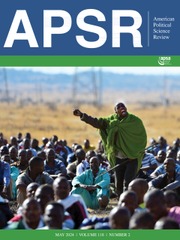Article contents
Autocratic Policy and the Accumulation of Social Capital: The Moscow Housing Renovation Program
Published online by Cambridge University Press: 31 October 2023
Abstract
Can autocratic policy generate incentives for the accumulation of social capital and political engagement? This question is important to understand stability in authoritarian regimes that increasingly rely on governance to build legitimacy and social support. While existing research shows that the incentives for societal interaction embedded in policies can yield new forms of social capital and political engagement in democratic regimes, the top-down nature of policy and the corrupt and information-poor context of policy implementation could undermine this mechanism in authoritarian regimes. We explore this question by examining the effect of the Moscow Housing Renovation Program, a massive urban renewal project, that required residents to organize to obtain new housing. Comparing a matched sample of 1,300 residents living in buildings included and excluded from the program, we find that interactions induced by the program led to changes in the level of social capital among residents in included buildings. We also find spillover effects on political engagement and collective action against pension reform.
- Type
- Research Article
- Information
- Copyright
- © The Author(s), 2023. Published by Cambridge University Press on behalf of American Political Science Association
References
REFERENCES
A correction has been issued for this article:
- 1
- Cited by
Linked content
Please note a has been issued for this article.



Comments
No Comments have been published for this article.